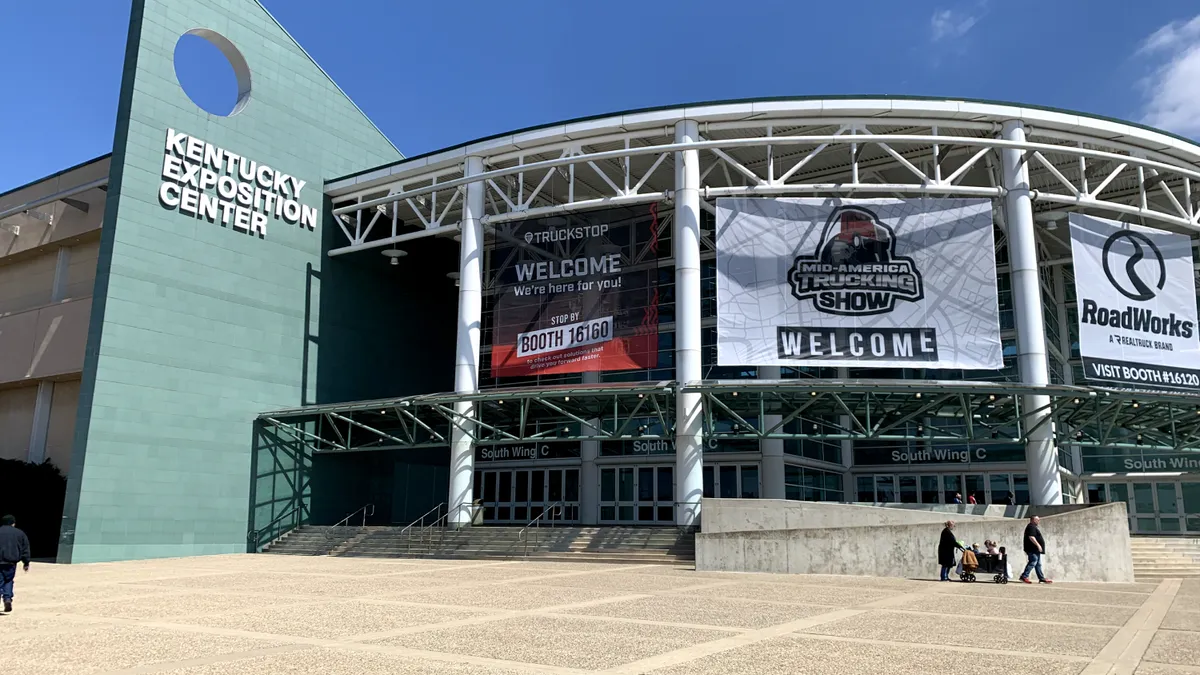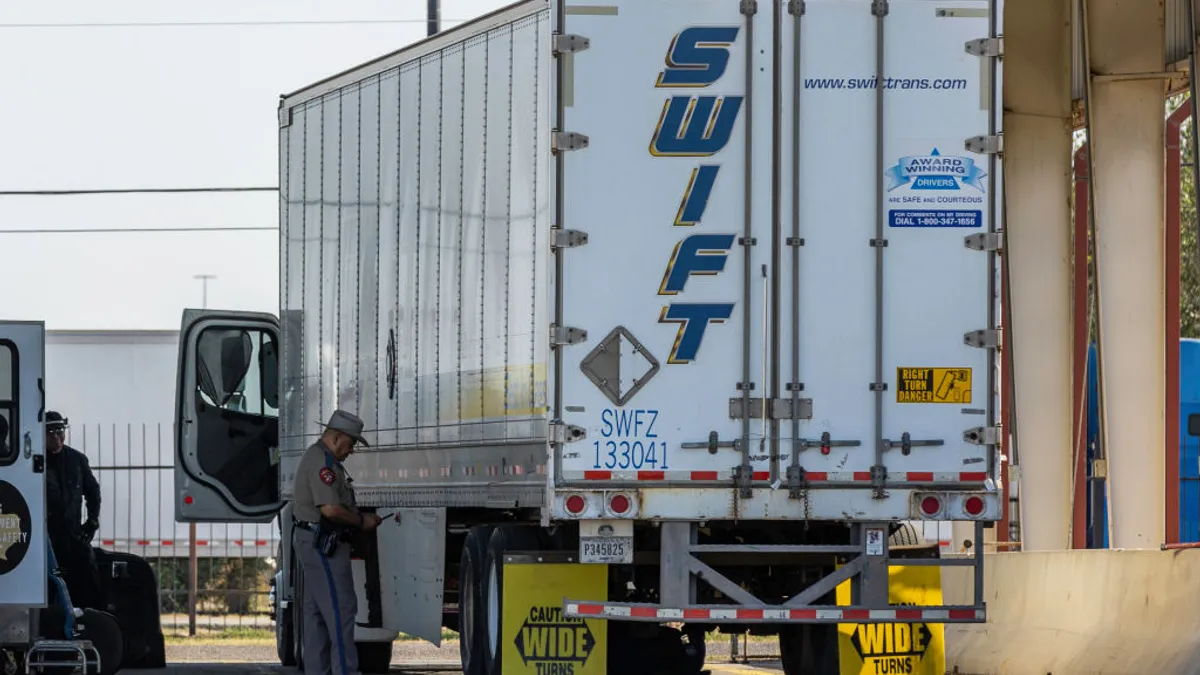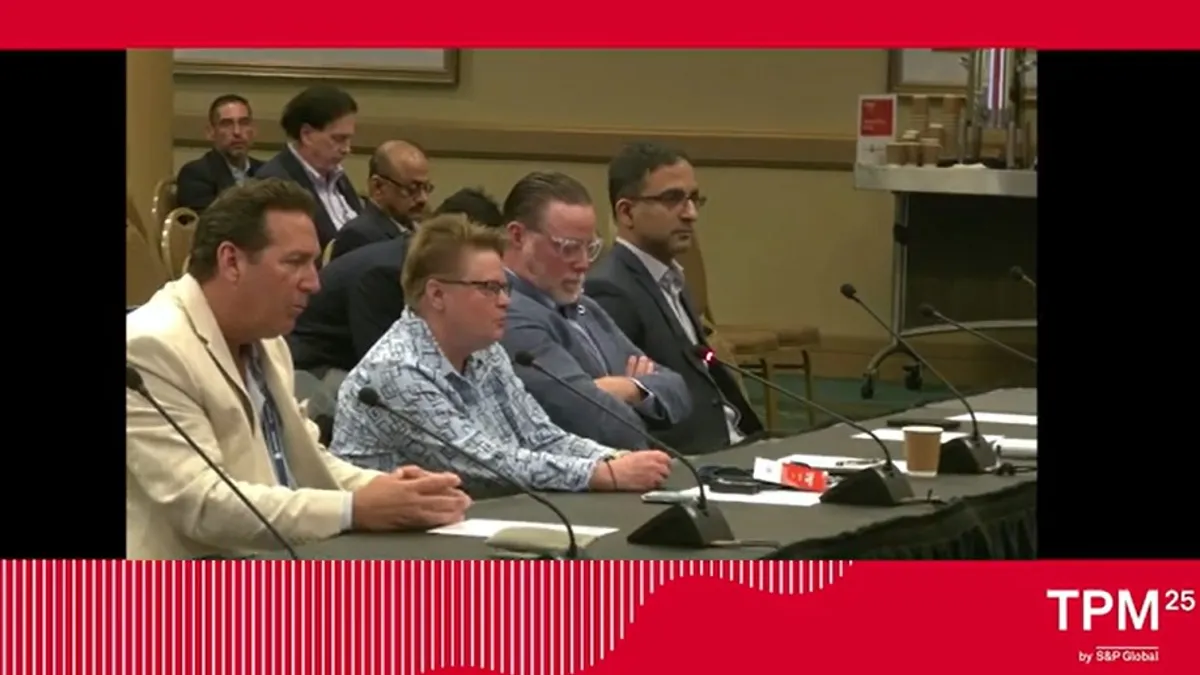At the height of an unprecedented trucking boom, with spot prices and LTL rates at record levels, Central Freight Lines said it would shutter operations and be done with almost all of its freight pickups by Dec. 13.
One of the main reasons was debt, according to the company president, and an inability to pay it down. Bruce Kalem, Central Freight Lines president, told Transport Dive via email that total liabilities were about $580 million.
"The company explored all available options to keep operations going," Kalem said in a separate emailed statement. "However, operating losses sapped all remaining sources of liquidity, and the company's liabilities far exceed its assets, all of which are subject to liens in favor of multiple creditors."
The company is now in negotiations to sell "a substantial portion of its equipment" to Estes Express, and is working with Estes Express and other carriers to help its employees find other jobs, Kalem said in the release.
The closure, first reported by FreightWaves, has spectators wondering if it is an indicator of things to come in the trucking industry, like Celadon's sudden closure in 2019.
With Celadon, the last straw appeared to be a lengthy strike by the United Auto Workers in 2019. The TL company also had overexposure to industrial loads, and as industrial activity waned and as the UAW struck, Celadon had to suddenly disband in the second week of December 2019.
According to one LTL expert, evidence suggests the Central Freight Lines story is not necessarily a sign of more to come, or the precursor of a freight recession.
A TL expert, on the other hand, is more concerned.
A cutthroat LTL sector
To Satish Jindel, president and principal consultant of SJ Consulting Group, the Central Freight Lines closure is indicative of internal problems, not external factors.
"There were management issues," Jindel said, "a failure to realize underpricing."
The Texas-based LTL carrier kept trucking as debt piled up in the last decade. It kept hauling through the Great Recession, through the freight recession of 2018-2019, through the COVID-19 pandemic. In that time, Central Freight Lines even survived the loss of a major customer, Amazon, in 2016.
As it took on more debt or losses, Central Freight Lines found lifelines, having a powerful presence with CEO Jerry Moyes, the founder of Swift Transportation, who Kalem said poured $76 million into the company in just the last 12 months. In total, he probably invested twice that much over time, Kalem said.
And it showed in strategy. In March 2020, Central Freight Lines even bought Volunteer Express of Tennessee, a 12-terminal LTL carrier.
Jindel said the new owner, Moyes, had great success in founding Swift, a TL giant that merged with TL carrier Knight in 2017. But Moyes found the LTL industry to be a different animal.
The LTL sector, much smaller than the TL sector, has cutthroat competition for customers and drivers. It is dominated by well-managed players, such as FedEx Freight, XPO Logistics and Old Dominion Freight Line. It also has some large players that, like Central Freight Lines, have been dogged by problems.
Yellow is one such example. New England Motor Freight is another. The LTL carrier of New Jersey went bankrupt earlier in the freight recession of 2019. The end came after trying to manage losses over two years.
"There were management issues ... a failure to realize underpricing."

Satish Jindel
President and Principal Consultant of SJ Consulting Group
In the cases of New England Motor Freight and Celadon, economic turbulence that other fleets managed proved fatal for them.
Central Freight Lines, ranked as North America's 21st largest LTL carrier by Transport Topics, is likely the biggest carrier failure since Celadon. That fact, during a time of inflation and possible consumer caution, could mean another cooling down, possibly a freight recession.
Jindel doesn't buy that. Demand is strong, he said. And LTL business will be strong in 2022 because of growing e-commerce, supply chain problems that limit capacity and limitations on driver entry into the market.
Signs point to loosening capacity
No one thought Central Freight Lines would fold or file for bankruptcy, said Jindel, pointing to the 2020 acquisition of Volunteer Express.
Such sudden news of closures and bankruptcies can sometimes be the canary in the coal mine, a sign of a big wave of business receding back into the ocean. Such news can serve as omens, the first signs of an overheated economy or a freight market slowing down.
It can also mean pricing has to come down, because consumer demand is easing.
"I've been wondering when this would happen," Dean Croke, DAT principal analyst, said of Central Freight Lines' announcement.
Croke has seen sustained TL spot prices for more than a year, since North America adjusted to the pandemic and started using more e-commerce in the summer of 2020. For the 12 months ending Dec. 12, TL rates were up 44 cents per mile, Croke said.
Spot linehaul rates
But even though loads moved were up 12% for the week ended Dec. 12, rates "were flat or down," said Croke.
That doesn't mean a precipitous drop for trucking. But it does suggest capacity is loosening up, Croke said.
One reason for that could be because retailers and warehouses have been readying for Christmas season since June, and may be well-stocked. That means they need fewer trucks moving their goods. After the gift-giving holidays are over, retailers could see inventories sufficiently packed, and not picked through constantly..
Within the trucking industry, "there is a definite sense rates will turn by mid-2022," Croke said, adding that he will look through the tea leaves come the first few weeks of 2022 to see what he can tell. But he said he expects "market equilibrium" by mid-2022.
For TL and LTL fleets that have stayed above their problems because of higher rates, a small downturn in prices could squeeze hard. As shippers begin to sense a change in the market's ability to meet demand, they make take a second look at contract rates, if they're higher than spot, Croke said.
"As soon as shippers get a sniff that capacity is easing ... they'll use more spot rates than contract rates."

Dean Croke
Principal Analyst at DAT
"As soon as shippers get a sniff that capacity is easing, after five quarters or six quarters of double-digit rate increases ... they'll use more spot rates than contract rates," said Croke.
Croke said he fears some carriers have too much exposure right now to the spot market, where things are elevated.
But LTL is not like the gig economy, Jindel said, where anyone with a car and a driver's license can start delivering.
"Trucks aren't parked in the driveways of people's homes," said Jindel. "Not everyone can handle certain types of freight."
This story was updated with additional details from Central Freight Lines.




















